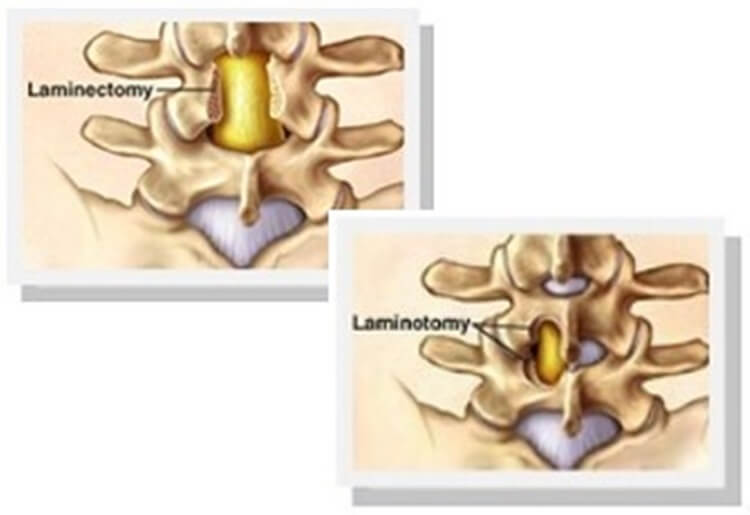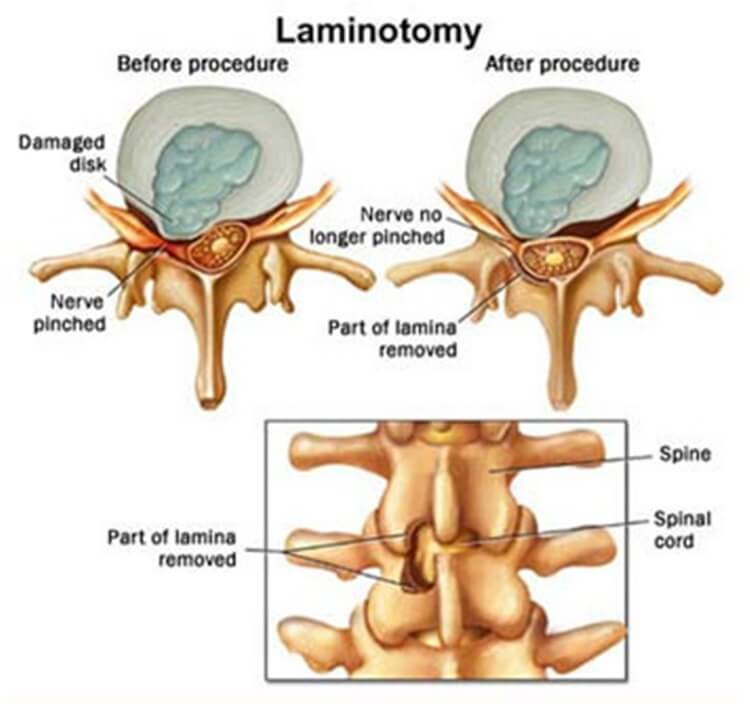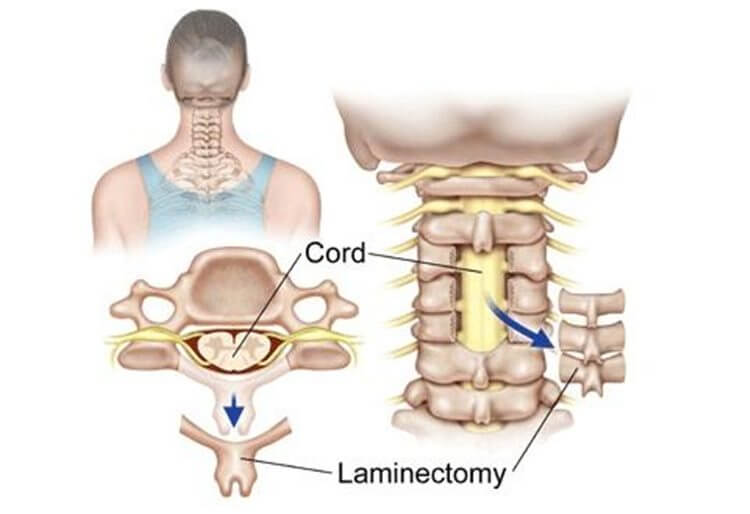Have you tried all the conservative treatments yet the back pain does not go away? How about getting surgery?
Laminectomy and laminotomy are the two most commonly performed surgeries to treat the constant back pain due to the compressed nerves.
Besides, if you do not treat your back pain at the right time, there are chances of you suffering through permanent nerve damage in the long run.
The two procedures, laminectomy and laminotomy, though sound similar but there are a few differences that you should know before opting for any of them.
Which surgery should you opt for?
The simplest answer to this question is; ask your doctor. Only an Orthopedic or a Neurosurgeon can suggest the right option looking at your condition.
Let’s learn the difference between the two commonest back surgeries in detail.
Laminotomy Vs Laminectomy

In simple words, the differentiating factor between laminectomy and laminotomy is the amount of tissue or bone removed during surgery.
To remember the difference between the two, you should first know the meaning of these basic terms.
- Otomy means to make a cut or to incise.
- Ectomy means to completely remove that part.
- Lamina in both terms indicates that we either remove a small part of the lamina or the whole lamina from both sides.
However, in both procedures, we remove nearby ligaments and retract the muscles before removing the bulging mass. Moreover, laminectomy sometimes includes the removal of spinal processes and facet joints as well.
Both these processes are safe and produce effective results. However, like any other surgery, complications may occur. For example, you may get bleeding, infections, nerve damage, etc
Though we did say that the surgeon is the one to decide (or recommend) the type of surgery you need. But how will your surgeon conclude anyway?
Well, the deciding factor between laminotomy and laminectomy depends on how severe the compression and weakness are. If it involves one or two spinal levels, laminectomy will be performed.
These surgeries are rarely performed together. However, to stabilize the spine and completely get rid of the disease, your surgeon might as well perform discectomy, foraminotomy, or spinal fusion surgery,
Laminotomy

Laminotomy is usually successful in treating lumbar spinal stenosis, a condition related to arthritis. Similarly, all those conditions that involve the narrowing of the spinal canal and compression of spinal nerve roots are treated with a laminotomy.
Following are the conditions that require laminotomy:
- Bulging disc
- Age-related back pain or diseases
- Degenerative disc diseases
- Bony spurs
- Sciatic pain.
Lumbar injuries are the most common injuries of the backbone. Hence, the sciatic nerve that is passing from the lumbar region is very prone to compression. This will then result in sciatic pain, which radiates in the legs.
All of these deformities compress the surrounding nerves and narrow the canal causing severe pain. Plus, you will feel difficulty in performing the daily tasks.
The stress on the nerves due to any reason also results in:
- Irregular bowel and bladder habits
- Severe pain and weakness
- Difficulty in walking
- Needle-like sensations
- Numbness
Note: All these symptoms should stop after the surgery. If you are still experiencing any discomfort or the same symptoms after the surgery, urgently consult your doctor.
The Procedure Of Laminotomy
The doctor aims at removing the bony spur or herniating disc from the joint to open the space. And the primary goal is to relieve pain caused by pressure on the nerves and allow maximum movement of the spine
Following are the steps to perform laminotomy:
- Your doctor will first ask you to lie on your stomach.
- After giving general anesthesia, your surgeon will either make a small cut on only one side of the lamina (unilateral) or both sides (bilateral).
- Sometimes, the doctors create a hole in the lamina to pass the endoscopic tube and see the discs.
- The last step is to remove the extra mass and close the suture after putting the retracted tissues in place.
Note: In laminotomy, most of your backbone will remain intact and by the end of surgery your back will be pretty much stable.
Laminectomy

As long as your condition and associated pain are not severe, your doctor will recommend a laminotomy. This is because laminotomy has less harmful effects and a faster recovery period than a laminectomy.
Unlike laminotomy, this procedure removes a bigger portion of the vertebral lamina. The goal is similar to laminotomy, that is, to relieve the pressure by decompressing the nerves and enlarging the spinal space.
The Procedure Of Laminectomy
There are two common methods to perform laminectomy;
- A minimally invasive procedure, in which the surgeons make one or more cuts and pass small instruments to separate the tissues instead of cutting them. This surgical process also includes the use of endoscopes to assess the defective parts.
- In a traditional laminectomy, the surgeons make one big incision to cut through the skin, fats, and muscles to approach the defected disc or bony spurs.
There is one disadvantage of laminectomy over laminotomy. As it involves the removal of a large part of the bone, laminectomy might as well affect the natural movement of the spine.
However, to minimize this side-effect, the surgeons usually perform a spinal fusion surgery after a laminectomy to relieve the pressure and enlarge the spinal space.
We recommend you keep seeing a physical therapist throughout your recovery period to avoid any future complications.
FAQs
It is also known as Post-laminectomy syndrome. And as the name suggests, it occurs in a few patients after a failed laminectomy. If you are suffering from extreme pain and weakness after the surgery, consult your doctor.
Usually, the recovery from laminectomy is similar to the recovery process of discectomy and takes around 6 to 8 weeks. On the other hand, laminotomy has a faster recovery period as it is comparatively a smaller surgery.
Conclusion
To sum it up, a laminotomy is the partial removal of the lamina. Whereas, laminectomy is the complete removal of the bony lamina.
There is not much difference between laminectomy and laminotomy, both the procedures are almost similar. Your doctor will recommend the best option for you.
However, laminotomy is performed when there are lesser complications. And laminectomy is suggested when the situation is critical and can not be resolved by other treatments.
